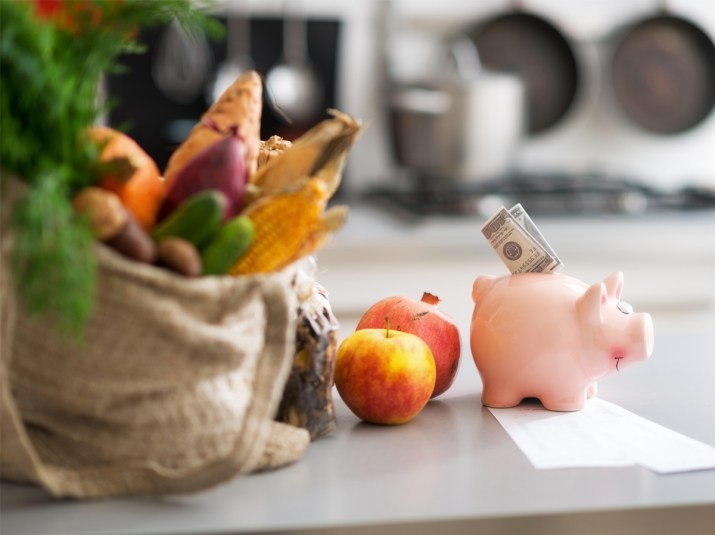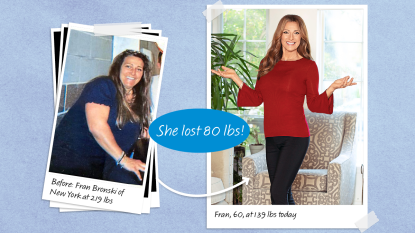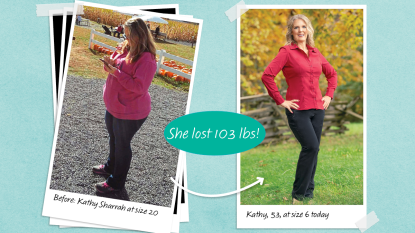6 Ways to Eat Healthy and Not Spend a Fortune

Surprise: A recent study found that fruit and vegetables are about 30 cents cheaper per serving than processed foods. Here, our experts share the strategies that’ll help you cut costs even more on good-for-you eats.
Cut costs on organics.
Organic foods tend to boast more nutrients than their non-organic cousins, reveals Amy Gorin, RDN, a dietitian, nutritionist, and founder of the healthy eating blog Amy’s Eat List at AmyDGorin.com. The thing is, that can come with a bigger price tag. But here’s some good news: The cost difference between organic and nonorganic has shrunk by 9 percent in the past three years. One way to make sure you’re getting the best deal? Opt for store-brand organics being offered by more and more supermarkets. Safeway’s O, Kroger’s Simple Truth and Aldi’s Simply Nature, for instance, cost almost 20 percent less than their national counterparts.
Score cheaper produce.
Find out if your local grocery store keeps a “misfit bin,” suggests Gorin. “It’s a shelf of misshapen produce sold at steep discounts of 50 percent or more.” Or try MisfitsMarket.com or ImperfectProduce.com, which sells subscription boxes of oddly-shaped (but just as healthy!) fruit and veggies at up to 50 percent off. Also smart: Consider visiting an ethnic food market. “Their prices tend to be much better because they source food from small farms that offer serious savings,” reveals Gorin. “My local Asian grocery, for example, sells veggies for up to 30 percent less than my regular supermarket.”
Spend less on spices.
No need to shell out a fortune to jazz up your dishes with healthy spices. For savings on parsley, sage, rosemary, and thyme (and more!), head to your local dollar store, recommends Mary Ostyn, author of Family Feasts for $75 a Week (from $5.19, Amazon) and A Sane Woman’s Guide to Raising a Large Family ($14.99, Amazon). “They’re stocked with spices that cost a buck!”
“Beef” up meat.
The waist-friendly way to save on pricey red meat? Supplement dishes with veggies, suggests Ostyn. In one study, participants rated burgers made from a half-beef, half-mushroom blend just as satisfying as 100 percent beef — and they were 24 percent lower in fat and 27 percent cheaper than all-beef burgers. Another option? Consider halving the meat used in soups or chili and adding black beans or chickpeas.
Save more with a straw.
The average family is forced to throw away $1,500 a year worth of food because it’s gone bad. A clever DIY fix: Vacuum-seal produce to remove the air that accelerates spoilage. “If you don’t own a sealer, you can use a straw,” promises Ostyn. “Just place produce in a zip-top bag, seal it, then open it a little bit and insert the straw. Suck all the air out of the bag and slide the straw out, sealing the opening as quickly as possible. This trick extends the shelf life of produce by at least a week!”
Tap your creativity.
Finding new ways to use every part of a plant can help you stretch your healthy produce, says Leanne Brown, author of the bestseller Good and Cheap: Eat Well on $4/Day ($13.95, Amazon). “For example, we often discard carrot tops, but you can make a pesto from carrot leaves — simply replace basil with carrot tops in your standard pesto recipe, including about 1/2 cup of fresh basil for flavor. These little creative touches are a double blessing, making your meals healthier and boosting your bottom line!”
This article originally appeared in our print magazine.
We write about products we think our readers will like. If you buy them, we get a small share of the revenue from the supplier.
More From Woman’s World
13 Meal-Replacement Shakes That Keep You Full and Taste Delicious
5 Natural Remedies for Weight Gain, Hot Flashes, and Other Menopause Symptoms
From Sunflower to Olive Oil: Everything You Need to Know About Common Cooking Oils













